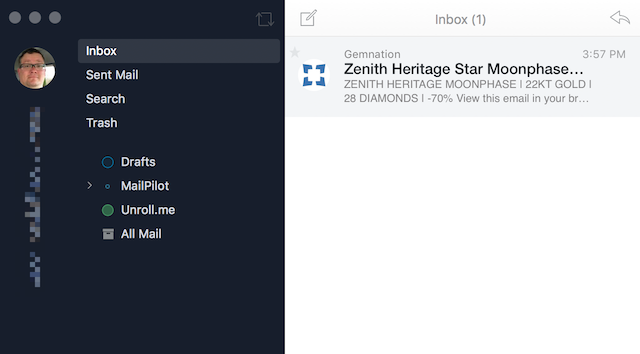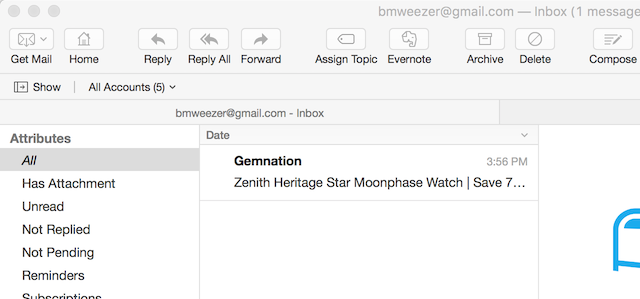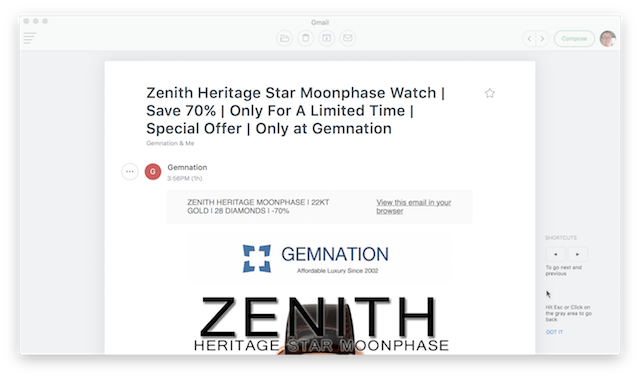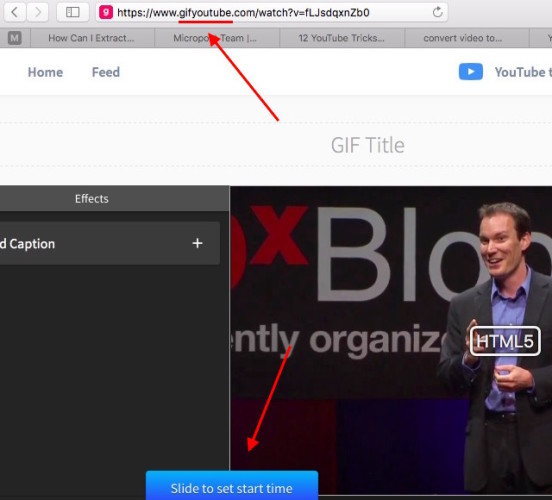

Every Mac comes with a free email application, appropriately named Mail. Using the native Mail application is fine for most people, especially for those who only use iCloud, but things get trickier when you’re dealing with multiple email accounts.
For Gmail users in particular, more thorough solutions are available, many which are free. Here’s a look at five Mail alternatives and why they might work for you.
Marketed as being a “lighting-fast email client for Mac,” AirMail is also the most beautiful application on the list. Offering Split Screen support for OS X El Capitan, the application looks and feels like it’s an Apple creation. It also features some options not available on the native Mac application, which consistently makes AirMail one of the best overall apps for OS X.
Chief among this is the ability to compose in Markdown or HTML. As you type on the left, the result is shown on the right side of the screen. Being able to view the formats side-by-side means you can make sure to remove broken links or weird-looking text before sending.

In AirMail, received messages may be organized by task. You can mark each email as To Do, Memo, or Done. The first are for items that require some action or a follow-up. A Memo is for items you need to memorize or store for later, and you can mark completed emails as Done. You can also Snooze messages, allowing you to move them to the side for viewing at a later time or date.
The application offers support for Google, iCloud, Exchange, Yahoo, Outlook, AOL, IMAP, and POP. It also works with many third-party integrations, including Dropbox, Google Drive, OmniFocus, Things, and many more.
AirMail is available in the Mac App Store. You can also download a beta version for free from the developer’s website. An AirMail for iPhone app is coming soon.
Like AirMail, Mail Pilot 2 turns mail into a to-do list, allowing you to focus on what’s most important. Unique to Mail Pilot 2 is a relatively new feature called Dash.

With Dash, your daily life is summarized on a dashboard to help you become more productive. It includes the number of messages that you have received in the past 24 hours, plus those that are completed, set aside, due, and late. Dash also summarizes the average time it takes for you to reply to emails and more. Another handy feature provides links to files that you’ve recently sent or received, which is very nice.
The application supports all standard IMAP accounts, including Gmail, iCloud, Yahoo, AOL, Rackspace, Outlook.com, and Google Apps. Mail Pilot 2 is available in the Mac App Store. A $9.99 iOS version is available from the App Store.
Do you want to learn more about Mail Pilot? Be sure to take a look at our original review.
Postbox is one of the oldest email clients on our list, but it’s also a very stable product. Postbox’s goal is to remove some of the chaos associated with mail, by offering robust tools to make the process more efficient.

One of Postbox’s nicest features is the ability to group messages by topic. This allows you to break work into smaller, more manageable chunks. Grouping by subject is particularly useful when you have more than one email account. Postbox also enables you to create Pre-Made Responses, which you can reuse as often as needed.
Postbox works with most email providers including Gmail, Yahoo, AOL, and iCloud. It also supports POP3, IMAP, and SMTP protocols. It is available from the Postbox website. A 30-day free trial is also available, so you can try before you buy.
This mail client only recently arrived on OS X after finding success on iOS and Android. Dubbed “simple, beautiful & blazing fast” by its creators, the application features a transparent user interface, free of fancy buttons or slides.
This approach works well, especially if you have to go through a lot of emails each day or have multiple accounts. We especially like the application’s shortcut buttons, which allow you to move quickly to the next or previous email.

CloudMagic offers support for Gmail, Exchange, Google Apps, Yahoo, Outlook, iCloud, and all IMAP accounts. It’s available in the Mac App Store. CloudMagic for iOS and CloudMagic for Android are also available. Both are free.
Two of most popular third-party mail clients in recent years were Sparrow and Mailbox. After each was purchased by Google and Dropbox respectively, both were eventually shutdown, leaving millions of users in the lurch. By contrast, Nylas N1 is open-source and published on GitHub, meaning it will never be bought and axed.

Nylas N1 is the closest thing you’ll see to a next-generation mail program. It features a clean user interface, supports Gmail keyboard shortcuts, and best of all, because it is open-source, has a community to back it up. However, because it’s so new, you may run into some problems, at least in the short-run. For example, N1 doesn’t currently offer a unified inbox and the formatting isn’t quite right.
Why is N1 on our list? Because it’s been designed for easy modification. Best of all, it can run on multiple platforms including OS X, Windows, and Linux. Better still — it’s free. N1 is compatible with many providers, including Gmail, Yahoo, iCloud, Microsoft Exchange, and more. Currently, there is no N1 app for iOS.
If you’re happy with Apple’s default email client, keep it. For those looking for different ways to organize your mail or rather use something that plays nicer with Gmail, consider one of our alternatives. The most feature-rich solutions on the list are AirMail and Mail Pilot 2. The ones most likely to push mail into new areas in the next year are CloudMagic and Nylas N1. Looking for a reliable, stable solution? Consider Postmate.
Are you looking for more ways to customize your email experience on a Mac? Check out these hidden El Capitan features you probably don’t know about, or take your email writing to the next level with these tools.
Which email client for Mac do you use? Let us know in the comments below.




 Before Dragonborn: Top 10 Graphical Mods For Skyrim in 2013
Before Dragonborn: Top 10 Graphical Mods For Skyrim in 2013 For Sony, PS4 Needs to Succeed
For Sony, PS4 Needs to Succeed On Being And Nothingness: How Targeting In XCOM Subtly Shifts The Entire Tactics Genre
On Being And Nothingness: How Targeting In XCOM Subtly Shifts The Entire Tactics Genre Battlefield Hardline: Fix for incorrect Battlelog URL, clicking Play leads to registration page, shootouts, FRAPS, hardware, patch issue and Comondo issue
Battlefield Hardline: Fix for incorrect Battlelog URL, clicking Play leads to registration page, shootouts, FRAPS, hardware, patch issue and Comondo issue Six Misconceptions About Gamers and Gaming
Six Misconceptions About Gamers and Gaming